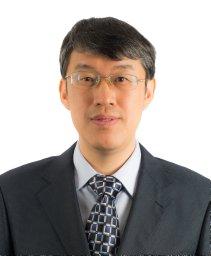
| Prof. Xiaoli Li NanyangTechnological University, Singapore (IEEE Fellow) Biography: Xiaoli is currently the Department Head and Senior Principal Scientist at the Institute for Infocomm Research, A*STAR, Singapore. He also serves as an adjunct full professor at the School of Computer Science and Engineering, Nanyang Technological University, Singapore. With a diverse range of research interests, Xiaoli focuses on cutting-edge areas such as AI, data mining, machine learning, and bioinformatics. His contributions to these fields are evident through his extensive publication record, boasting over 370 peer-reviewed papers, and the recognition he has received, including over ten best paper awards. He has been serving as Editor-in-chief of the Annual Review of Artificial Intelligence and an Associate Editor for prestigious journals like IEEE Transactions on Artificial Intelligence and Knowledge and Information Systems, as well as conference chairs and area chairs of leading AI, machine learning, and data science conferences, such as AAAI, IJCAI, ICLR, NeurIPS, KDD, ICDM etc. Xiaoli is an IEEE Fellow and Fellow of Asia-Pacific Artificial Intelligence Association (AAIA). He has been recognized as one of the world's top 2% scientists in the AI domain by Stanford University, and Clarivate's Highly Cited Researcher. Beyond academia, Xiaoli possesses extensive industry experience, where he has successfully spearheaded over 10 R&D projects in collaboration with major industry players across diverse sectors, such as aerospace, telecom, insurance, and professional service companies. In addition, he has been a member of Information Technology Standards Committee (ITSC) from Infocomm Media Development Authority (IMDA) since 2020. Moreover, he serves as a health innovation expert panel member for the Ministry of Health (MOH), expert panel member for Ministry of Education (MOE), as well as an AI advisor for the Smart Nation and Digital Government Office (SNDGO), Prime Minister s Office, highlighting his extensive involvement in key Government and industry initiatives. Speech Title: Transforming Industries with the Power of AI In manufacturing and aerospace, AI-powered time series analytics enable predictive maintenance and real-time condition monitoring—reducing unplanned downtime and enhancing overall productivity. In professional services, AI supports intelligent decision-making by boosting auditor efficiency and predicting staff attrition with greater accuracy. Meanwhile, in transportation, smart AI systems optimize traffic light control to reduce congestion and improve urban mobility. Through real-world examples and emerging use cases, this talk highlights how AI is not just augmenting workflows but fundamentally transforming how industries operate, innovate, and evolve. |
| A. Prof. Pavel Loskot ZJU-UIUC Institute, China Biography: Pavel Loskot joined the ZJU-UIUC Institute in January 2021 as an Associate Professor after being 14 years with Swansea University in the UK. He received his PhD degree in Wireless Communications from the University of Alberta in Canada, and the MSc and BSc degrees in Radioelectronics and Biomedical Electronics, respectively, from the Czech Technical University of Prague in the Czech Republic. In the past 25 years, he was involved in numerous collaborative research and development projects, and also held a number of paid consultancy contracts with industry. He is the Senior Member of the IEEE, Fellow of the Higher Education Academy in the UK, and the Recognized Research Supervisor of the UK Council for Graduate Education. His current research interests focus on mathematical and probabilistic modeling, statistical signal processing and classical machine learning for multi-sensor data. Speech Title: Exploring economies of large AI systems |

